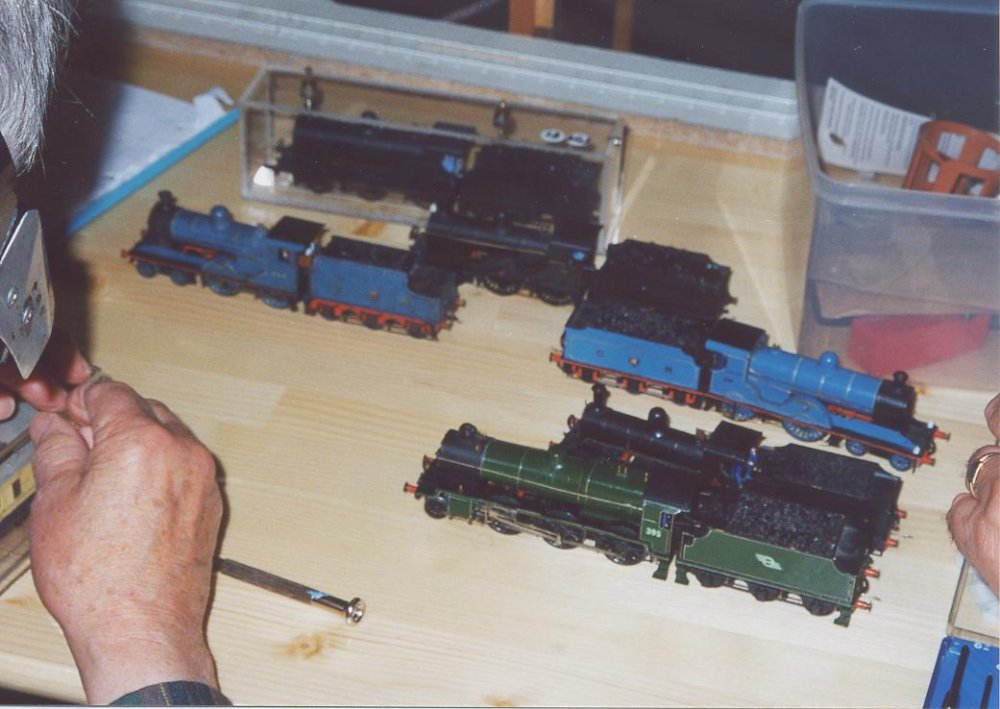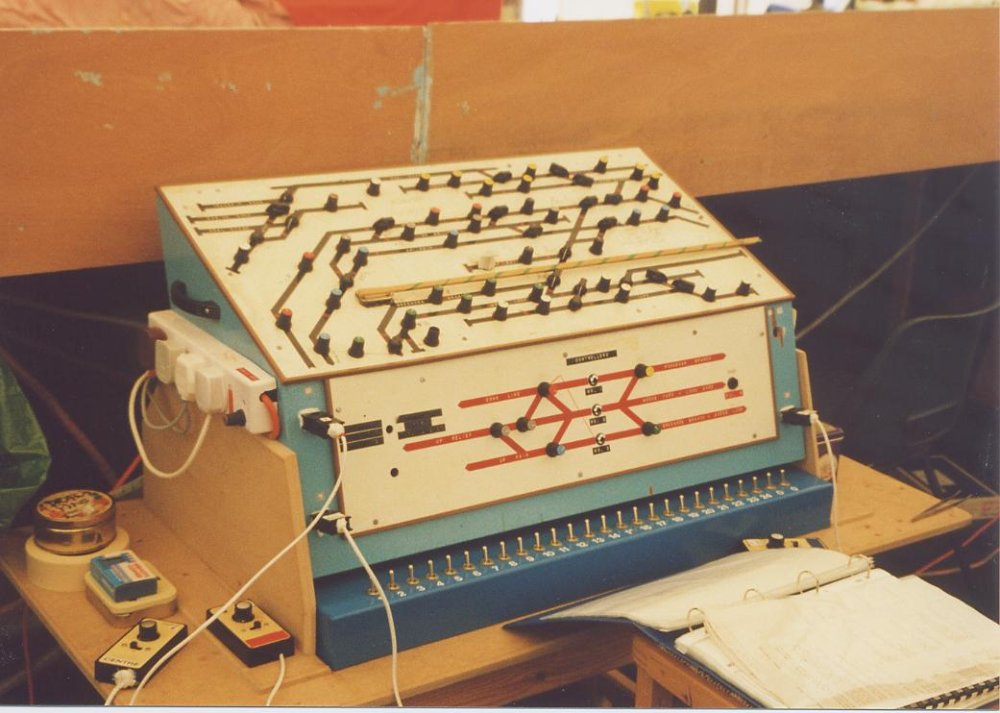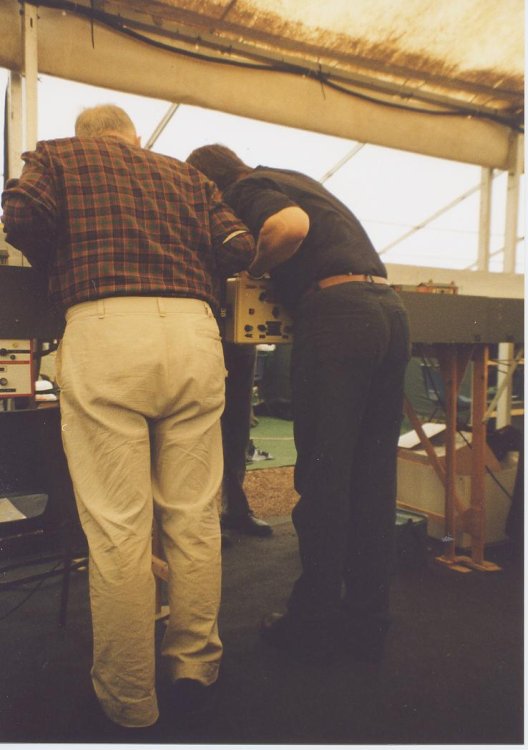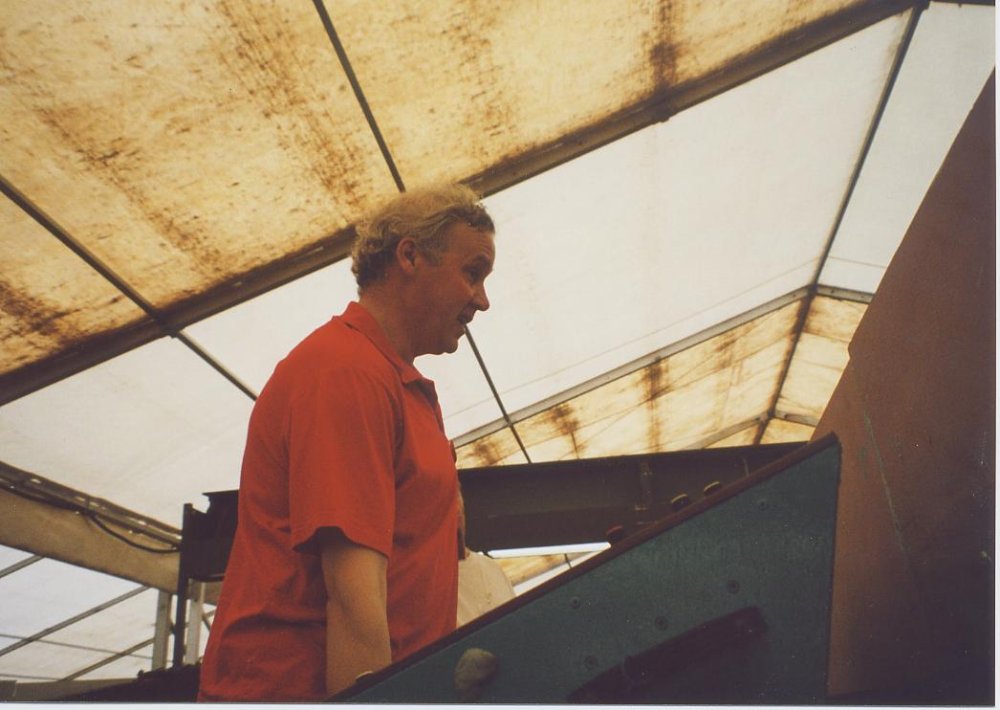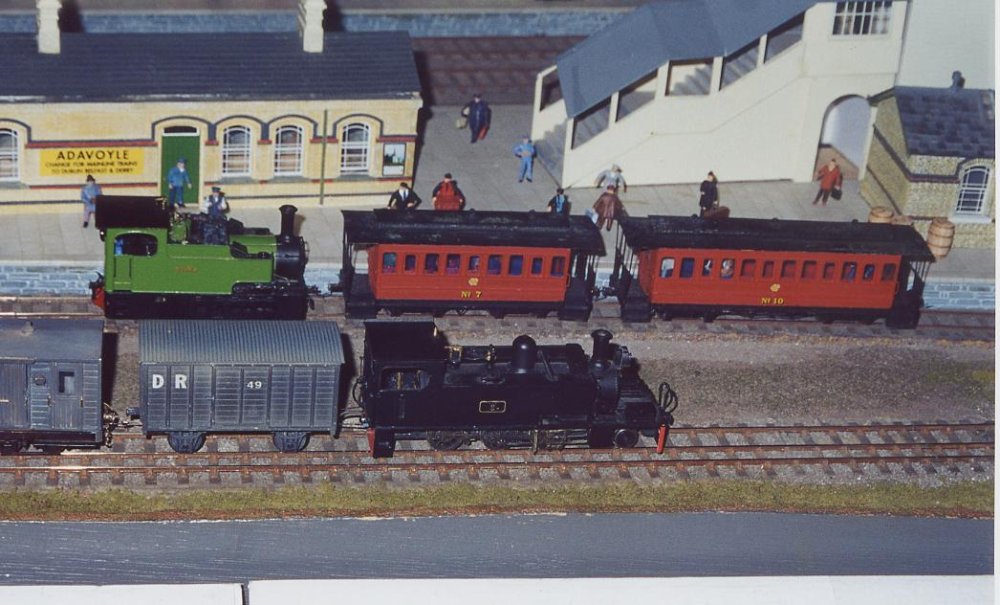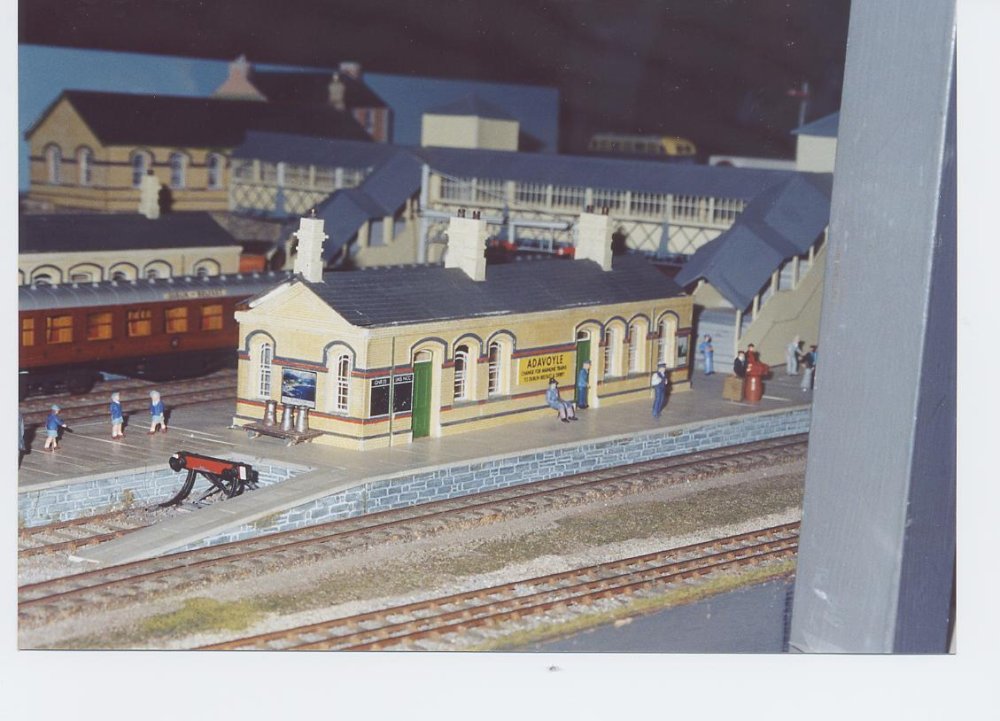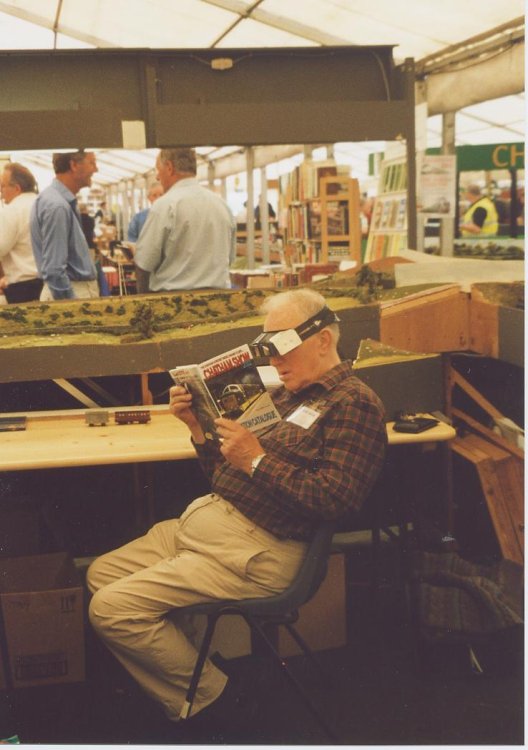-
Posts
2,275 -
Joined
-
Last visited
-
Days Won
4
Content Type
Profiles
Forums
Events
Gallery
Blogs
Store
Community Map
Everything posted by Horsetan
-
Hmm....
-
Some of that footage featured in a DVD from several years ago, but appears to have been remastered/improved since then. Still have it somewhere on the shelf.
-
As can be seen from the photo, Tony's K1a/393 no.395, was a fabulous thing. Almost entirely scratchbuilt. It was only years later when I was able to track down the dimensions of the Woolwich Moguls that I realised Tony had made an error in the relationship between the greater width of the footplate and the cab. When the Moguls were assembled in the late MGW/GSR era, the engine frames were spaced wider, and the overall width of the footplate was wider. What did not change was the cab width, resulting in an appreciable ledge between the cabside and the footplate edge. The same applied to the tender tank, which remained the same width as the original SECR/SR design. If you look at the above photo of 395, the cabside is too close to the footplate edge, which suggests Tony widened the cab when there was no need to. The same goes for the tender. That said, his is the only model of a K1a I have ever seen, in any scale. Maybe it's still the only one ever built.
-
I have exhumed the few scans of the Chatham gig. It was in late Spring 2002. I had been called in at fairly short notice so it was straight from the office in Shepherds Bush on Friday evening, driving direct to Chatham to help set up - I think it took the best part of three hours - then back to the hotel for dinner and drink. To my horror I had left my toothbrush and toothpaste at home, so woke up on the Saturday with distinctly furry teeth. That was the year the rain really came down, making the show tents a humid place to be. Unfortunately one tent roof partly collapsed under the collected volume of rainwater, and a trading stand was underneath it - I understand a substantial insurance claim had to be made. Note that Tony's eyesight appeared to be not as good as it used to be..... He sent me a letter of thanks after, and I'm happy to post it up here if you want a look.
-
Sometimes 'tis better that way.
-
I do. I was on the operating team for Adavoyle at Chatham one year, and still have a few non-digital photos from then.
-
It does seem as though coach rakes were more a matter of "whatever stock was available to form a train"
-
Will she be looking to flog 'em on eBay? Or are they family heirlooms to be passed down the generations?
-
The German SWR railway broadcast service on YouTube is just after posting a tribute film for Noel:
-
....but I only wanted the one!
-
Busáras Busarse!
-
Ernies Massive Irish 1930's to 2005 Photo Archive
Horsetan replied to Glenderg's topic in Photos & Videos of the Prototype
The first one looks a bit like Galway Station goods yard.... Second one, no idea. Third one: is there anywhere on the Dublin-Cork route that had what looks like a full crossover? -
Almost as many Prods as there are in Ulster.
-
Limerick to Foynes railway reopening plan
Horsetan replied to spudfan's topic in What's happening on the network?
In other words, be like China. -
Limerick to Foynes railway reopening plan
Horsetan replied to spudfan's topic in What's happening on the network?
May not happen in our lifetimes. Kicking cans down the road is easier. -
Hurty feelz.
-
Well, he's set a pretty high bar....
-
Seems the cyclist has previous form for other offences.... Google search for George Caraska brings up a quite extensive list. It does seem as though he's mentally unwell.
-
Anhalter Bahnof - Well Worth the Watch.
Horsetan replied to Georgeconna's topic in Continental European Modelling
Just look at the size of it in HO: https://www.fotocommunity.de/photo/anhalter-bahnhof-ii-modell-technik-mu-guenterfrisch/40770772 Did you know that, back in 2003/4, Märklin released a kit to build the entire structure including the admin offices? It was in 1:220 scale (Z-gauge), and still managed to look gigantic. -
Anhalter Bahnof - Well Worth the Watch.
Horsetan replied to Georgeconna's topic in Continental European Modelling
'Tis not even a half-complete facade, but part of the lower two-thirds of the entrance wall/portico and a fragment of one side. That's it. That's all that's left. Even that is massive. Have a look round on Google Maps. The word "grandiose" doesn't even begin to cover the original structure. -
Anhalter Bahnof - Well Worth the Watch.
Horsetan replied to Georgeconna's topic in Continental European Modelling
Crazy ambitious modelling of a crazy ambitious station. Today's remains in Berlin are a tiny part of what was a gigantic structure -
A NSFW expression of gratitude from a pensioner: An oul favourite
-
Is there nothing to be said for another Mass?
-
Stoke-on-Trent has particular resonance for me since, every time I've gone there, I've come back with a car... I tend to give the place a wide berth now. You can never be too careful.
-
That's a hard one. Driver of the artic may have either not been aware of, or underestimated, the overall length of his load. On the other hand, he may have been very unlucky, crossing the railway but then getting stopped at the traffic lights situated after the crossing. Either way, his trailing load was still obstructing the line, and neither he, nor the train driver, had anywhere to run. The insurance claims are going to be interesting, not to mention the eventual accident investigation report.
.png.c363cdf5c3fb7955cd92a55eb6dbbae0.png)



